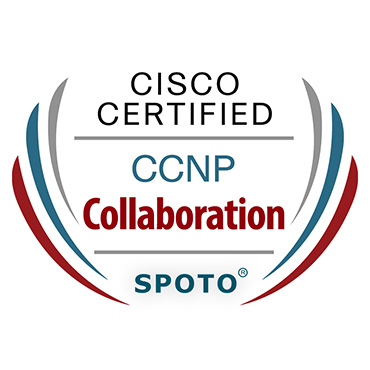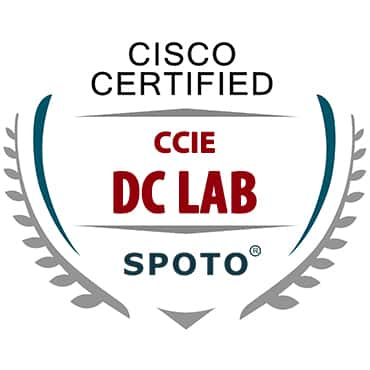The Short Version: Open shortest path first (OSPF) zones allow your networks and routers to determine the quickest and most efficient route from one site to another. Different link state advertisement (LSA) kinds provide information about your network’s and routers’ design.
The OSPF and LSA protocols collaborate to ensure that network traffic is always delivered to its intended destination. Large routing tables and network segments store routing tables efficiently, especially those that change often. When numerous routers are connected to a network, the technology limits bandwidth utilization to a minimum.
We believe that OSPF Areas and LSA Types mix is one of the most perplexing aspects of learning about OSPF, so we’re here to help.
Table of Contents
What exactly are OSPF Areas?
You’ve probably heard about RIP if you’ve studied fundamental networking and router concepts (Routing Information Protocol). Every few seconds, RIP delivers routing tables to surrounding routers. Keeping track of routing tables in this manner consumes a lot of bandwidth and produces unnecessary congestion.
Instead, OSPF splits networks into areas, which are sub-domains. An area is a logical grouping of OSPF networks, routers, and links that share the same area ID. A router within an area only needs to maintain a topological database for the area to which it is assigned, which decreases the size of the database. Rather than knowing the topology of a complete network, it only has to know its own, which allows the routers in the region to run considerably more efficiently.
As a result, the main advantage of constructing zones is that it reduces the number of routes to propagate — by filtering and summarizing routes.
OSPF vs BGP: What are differences and which to use?
What exactly is the Backbone Area?
The initial area to build in an OSPF configuration is “Area Zero” — sometimes known as the “Backbone Area.” Some companies never expand beyond this one location. As a company grows, it often adds more routers, which causes router tables to become unruly with too many routes and updates. All of this results in a waste of processing cycles. As a result, you can divide your network into several areas while still contributing to Area Zero to keep things running smoothly.
What exactly are Standard Areas?
Standard Areas are used to improve the efficiency of configurations. You could wish to divide your routers and do a summary between the locations you’re constructing. This allows the routers to interact with one another and with the rest of your network.
What exactly are Stub Areas?
Stub Areas are stubby because the information they may acquire is limited. Assume you have RIP routes, EIGRP routes, or even BGP routes in the cloud. You select whether to disseminate or include those routes into your system. As a result, they are considered external routes.
External routes can be blocked and replaced with a default route via stub areas. As a result, all routers in that Stub Area receive a default route.
What exactly are Stubby Areas?
Cisco pushed Stub Areas to the next level, declaring, “We’re going to develop a completely Stubby Area.” A Stubby Area filters external and other system routes and replaces them with a default route. This improves the efficiency of the routing table within that area.
What are the Not-So-Stubby Zones?
We have Stubby and Stubby Areas. Therefore it stands to reason that we should have Not-So-Stubby Areas, right? What about areas that aren’t quite as stubby? A Not-so-Stubby Area, or NSSA as it is often known, frequently appears out of nowhere.
Assume Area One represents China, and they have a partnership with another corporation that runs RIP. You must violate the stub’s rules to send these routes into your system. However, the stub must be active for your routing tables to remain efficient. As a result, you’ll have to bend the rules. That’s what we mean by a Not-so-Stubby Zone. A NSSA conceals those pathways. They appear as external routes once they’ve passed through the stubby area.
What exactly is an LSA (Link State Advertisement)?
Understanding all area kinds greatly simplifies the understanding of Link State Advertisements. In OSPF, an LSA is a router’s method of transmitting the information. LSAs are classified into several categories.
Router LSA is the first type of LSA.
Type 1 is the basic LSA that is generated when you add a new router to the network. This new router employs a Type 1 LSA to notify the network that it has become a part of the architecture.
Assume you have a router that is connected to two networks and wants to convey this information. Because it is a regular router, it will generate a Type 1 LSA. The router will then instruct the networks to incorporate it into their Link State databases.
Type 2 LSA: Network LSA (DR Generated)
When you put many routers into one switch, you don’t want them all to develop neighbor associations. When something happens, it quickly becomes a jumbled tangle of updates. The specified router receives a Type 2 LSA. As a result, one router becomes the designated router, and the Type 2 LSA informs all networks of the designated router’s identity.
LSA Type 3: LSA Summary (ABR Summary Route)
When a router is located between OSPF areas, Type 3 LSAs are used. As router information transfers between areas, it summarizes routes. For example, suppose you have Router One connected to the 10.1 networks, 10.1.1.0/24. It transforms from a Type 1 LSA to a Type 3 LSA as it advances from Area Two to Area Zero.
LSA Type 4: LSA Summary (ASBR Location)
An Autonomous System Boundary Router is located in Type 4 LSA (ASBR). These routers can exit your system, allowing inside routers to determine the optimum route for data transfer. Area Border Routers (ABRs) can, on the other hand, summarize between the regions.
Type 5 LSA: External LSA (ASBR Summary Route)
The external LSA is the fifth form of LSA. This is for routes that originate outside of a system. Type Five LSAs are opposed to Type Four LSAs. Type Four specifies the location of the ASBR, while Type Five specifies the routes from the ASBR.
LSA and OSPF Area Types
Let us now consider how these two concepts interact with one another. Stubby Areas block type 3, Type 4, and Type 5 LSAs. Type 5 LSAs are not permitted in Stub Areas. They are shrinking their routing tables as a result of this.
Not-So-Stubby Areas make use of an LSA that isn’t even on this list. They fly with a Type 7 LSA. Consider a Type 7 LSA to be similar to one of those theatrical masks. They install masks in front of all the Type 5 LSAs coming in to disguise them so the Stub Area doesn’t block them. However, once they pass through that mechanism, the masks are gone.
SPOTO OSPF Courses
Check out the SPOTO Cisco CCNA training course to learn more about OSPF areas and LSA kinds. SPOTO, regardless of vendor, can help you learn more about this networking fundamental.

Also, if you want to get CCNA certification on the first try, you should enroll in the SPOTO Cisco training course to find more practical knowledge on OSPF or get CCNA exam dumps to pass the CCNA exam on the first try!
Download Free Cisco CCNA practice tests
Latest passing report-100% pass guarantee
Related Cisco exam study materials
OSPF vs BGP: What are differences and which to use?
OSPF Routing Fundamentals You Must Know in CCNA Exam!
What Is OSPF LSA?
How to Config OSPF Virtual Link\Password Authentication and Totally Stub Area
What exactly are IPv6 Summary Routes?
How can you compare SD-WAN vs. MPLS?
What Is the Difference Between IPv4 and IPv6?
Latest Update-2021 Free CCNA 200-301 Exam Questions and Answers
What is SD-WAN (Software-Defined Network) and how does it work?
2021 Top MPLS interviews questions and answers you should know













Comments